Members and guests of the Melbourne Section gathered at the Maton Guitars factory where Patrick Evans, Manager, Product Design, Development and Speciality Projects conducted a tour of their manufacturing facility and spoke to us on:
The Art of the Luthier.
Following an introduction by Section Chair Graeme Huon, Patrick gave us a brief rundown of the history of Maton. He related how founder Bill May and his brother Reg started making guitars in a single car garage in Thornbury in 1946. In the late ‘40s they moved to a purpose-built factory in Surrey Hills, where they stayed for the remainder of Bill’s career. On Bill’s retirement in the mid ‘80s his daughter Linda and her husband Neville bought the business. Patrick related how Bill still kept coming into the factory after retirement, going downstairs to work on a double bass.
That double bass is still on display in the foyer of the current factory.
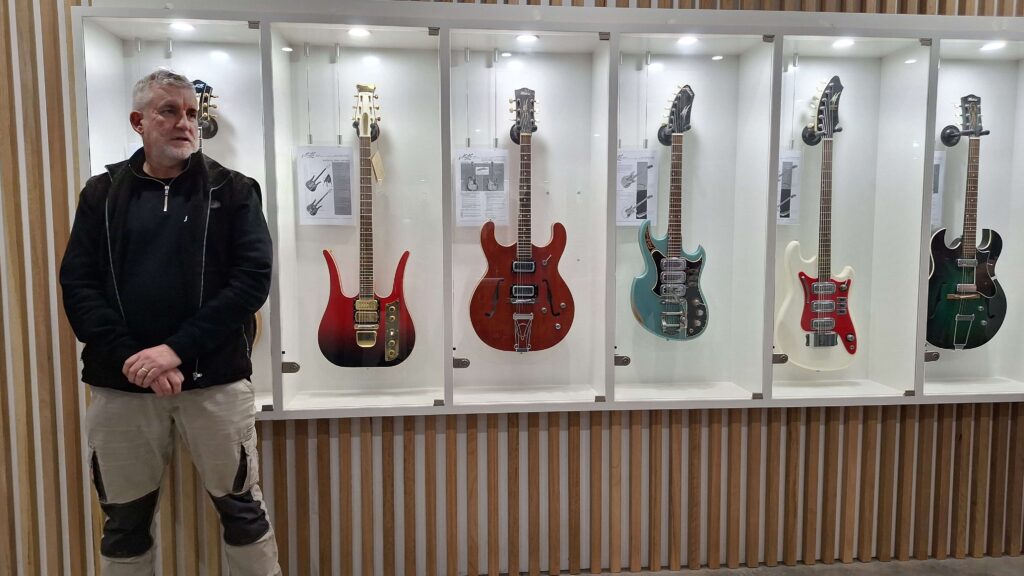
He described how, by the mid-1980s acoustic guitars had become less popular, so the business was struggling, only to be rejuvenated by the “Unplugged” movement of the late ‘80s, because Maton had the right product at the right time with a really good pickup system for acoustic guitars. Patrick recalled how, by the time he joined in ’93 they were in a much bigger plant in Bayswater. At that stage, they had a staff of 18 and were making 1500 guitars a year. He recounted how it was a steep learning curve for him. He mentioned that they developed new pickups and preamp systems and completely redesigned the acoustic guitar at that time. He told us that by the year 2000, they had a staff of 50 and had outgrown the Bayswater facility. Patrick oversaw the move to the current premises in 2002. He indicated that they now have a staff of 75, 55 of whom are involved in production on the floor, and are making between 6500 and 7000 guitars a year, half of which are being exported to the US, UK and Europe.
He recounted that their experience during COVID was unexpected, with sales collapsing initially, but by April 2022 sales had shot right back up to pre-COVID levels, and kept going up. He said during that period they were having trouble keeping up with demand, and it has only recently settled down again such that they can meet demand and hold stock again.
We then moved to an area where many historic Maton models were on display including a sample of the first 1946 production run, firmly protected under glass.
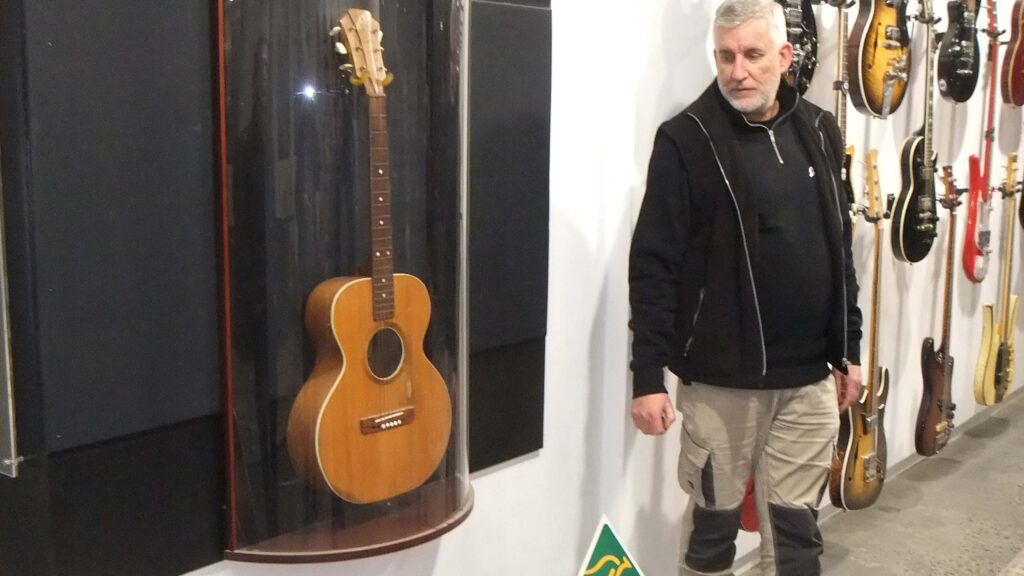
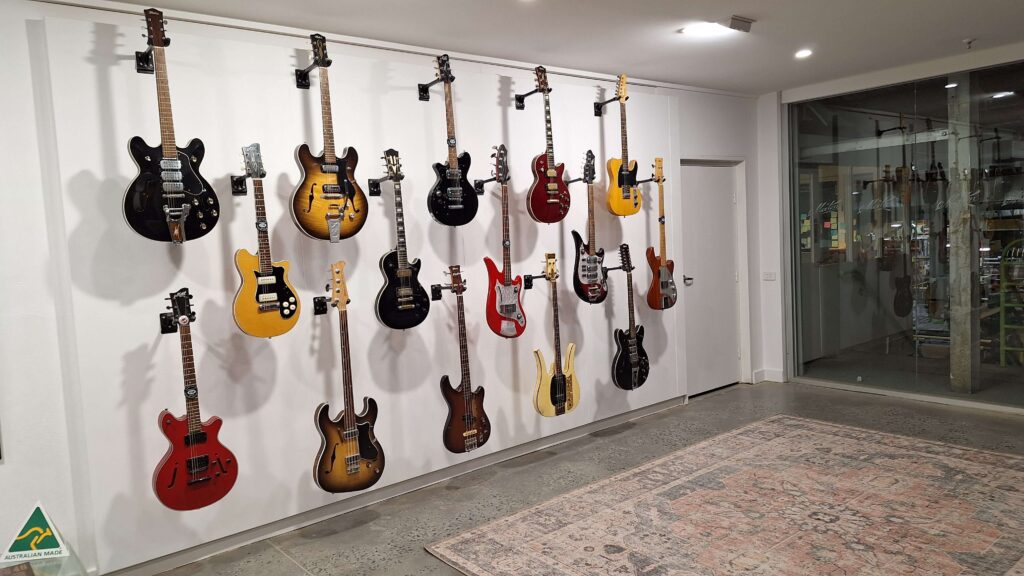
Patrick then led us into the factory proper, where he took us on a journey from the raw timber coming in right through to the completed instruments, packed and ready for shipping.
Starting in the timber area, Patrick explained that they use both local and overseas timber, but they do use a lot of Australian timber and always have done so. Citing Victorian blackwood, and Queensland maple as timbers that they use widely for their excellent tonal qualities. He showed us a drying kiln full of Otway Ranges blackwood shedding its water. He indicated that this load will be in the specially designed kiln for about 8 weeks until it is down to about 8% water content. He also showed us Spruce and Bunya pine timbers which are also used. He showed the tonal qualities of the various timbers, demonstrating the different tones of each when struck.


We then moved on to the wood machining area, where there were moulders, shapers, and a frame saw, which is a special machine for thinly slicing the timber, Patrick likened it to a bread slicer. All these machines turn the raw material into blanks for manufacturing the instrument body.
We then moved on to a massive piece of machinery, which turned out to be a CNC machine that makes the fingerboards, bridges and necks. Patrick commented that introducing this machine had significantly improved safety with no more lopped digits through manual milling as well as better dust extraction. The machine was currently loaded with some fingerboards for Tommy Emanuel’s personal guitar, and Patrick explained the process of routing out pockets for mother-of-pearl infills.
We then moved on to a 5-axis CNC machine which can be used to form a complete guitar neck in one process.

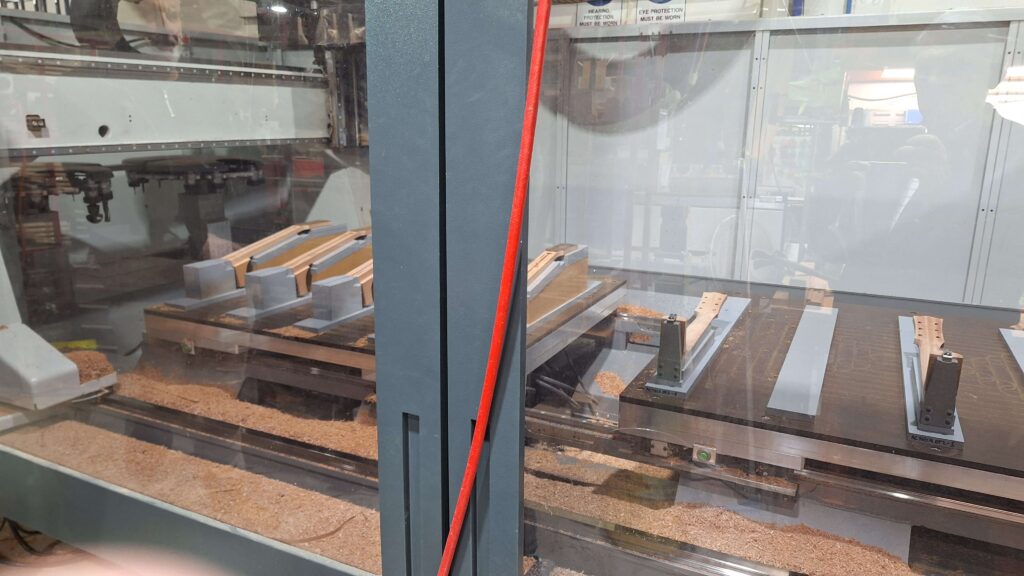
Then on to the dove-tailing machine, which creates the tapered dove-tail joint between the body and the neck. Patrick explained that this joint provides maximum strength, and its configuration results in the joint being further strengthened by the string tension. He indicated that the joint is further strengthened using a glue that can be softened under heat to facilitate repairs and neck replacements.
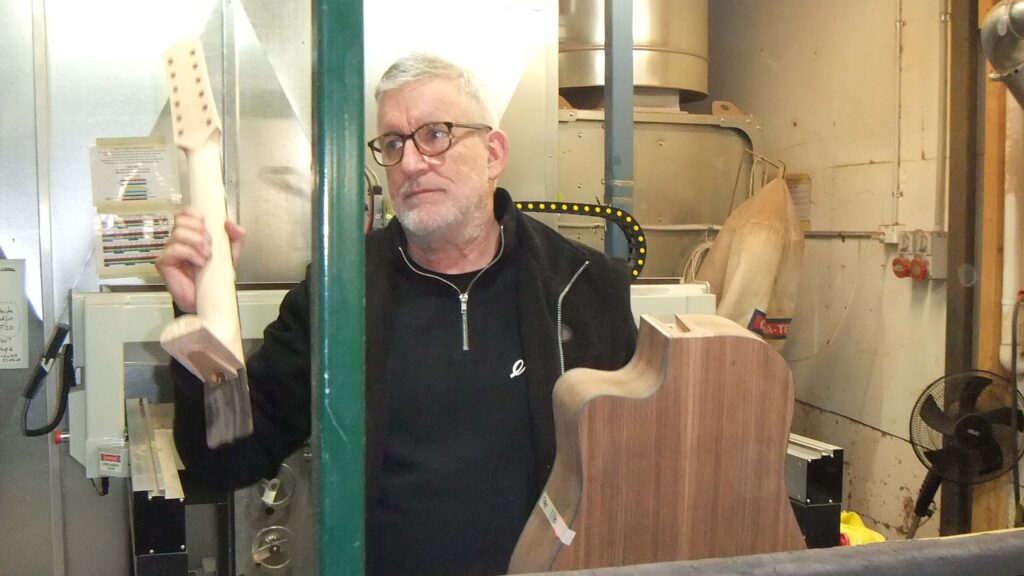
We then moved on to the production area, where he showed us soundboards and explained the magic of the bracing system and how it creates the instrument’s unique sound.

Following this, we saw the side-bender machines, and Patrick explained the process of bending timber using force and moisture, where at the critical moment the thin timber snaps into shape, and stays that way.
Then we saw “Body-building” – the area where the instrument bodies are assembled. Patrick noted that when all the pieces come together and are glued, nothing is under tension, all the parts are at rest.
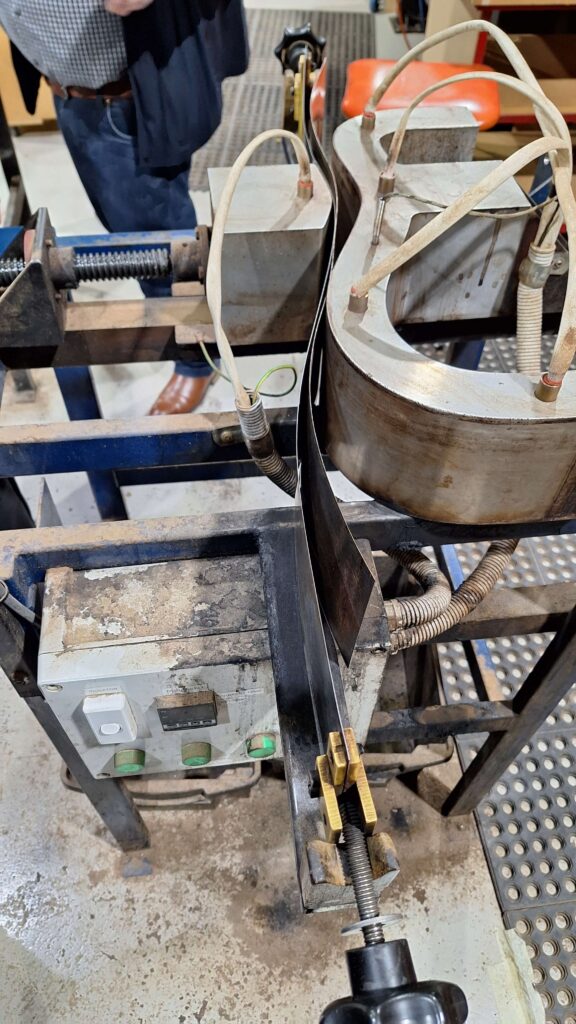
He then spoke briefly about the physics of guitar tone, and the work of physicists, citing Trevor Gore and his work on the instrument as a moving machine, and how that has informed his work.
Our final stops were the paint section, where Patrick explained the process, and the effect of the paint used on the final guitar sound, and the testing area where all elements of the finished product were tested and evaluated. Here we were shown the piezo pickups and preamps that can be fitted, and various aspects of their design were discussed.
We then returned to the display area, where Patrick fielded a wide range of questions about guitar design, as well as Maton’s future projects and products.
We thank Patrick, ably assisted by Marley, and Maton Guitars for an insight into an important Australian musical instrument maker.
Author: Peter Smerdon (Secretary)
Related Links:
Maton Guitars – https://maton.com.au/
Video Short Factory Tour (3min36secs) – https://www.youtube.com/watch?v=npbxpIJWbwk
Trevor Gore website: https://goreguitars.com.au/about/#Technical

